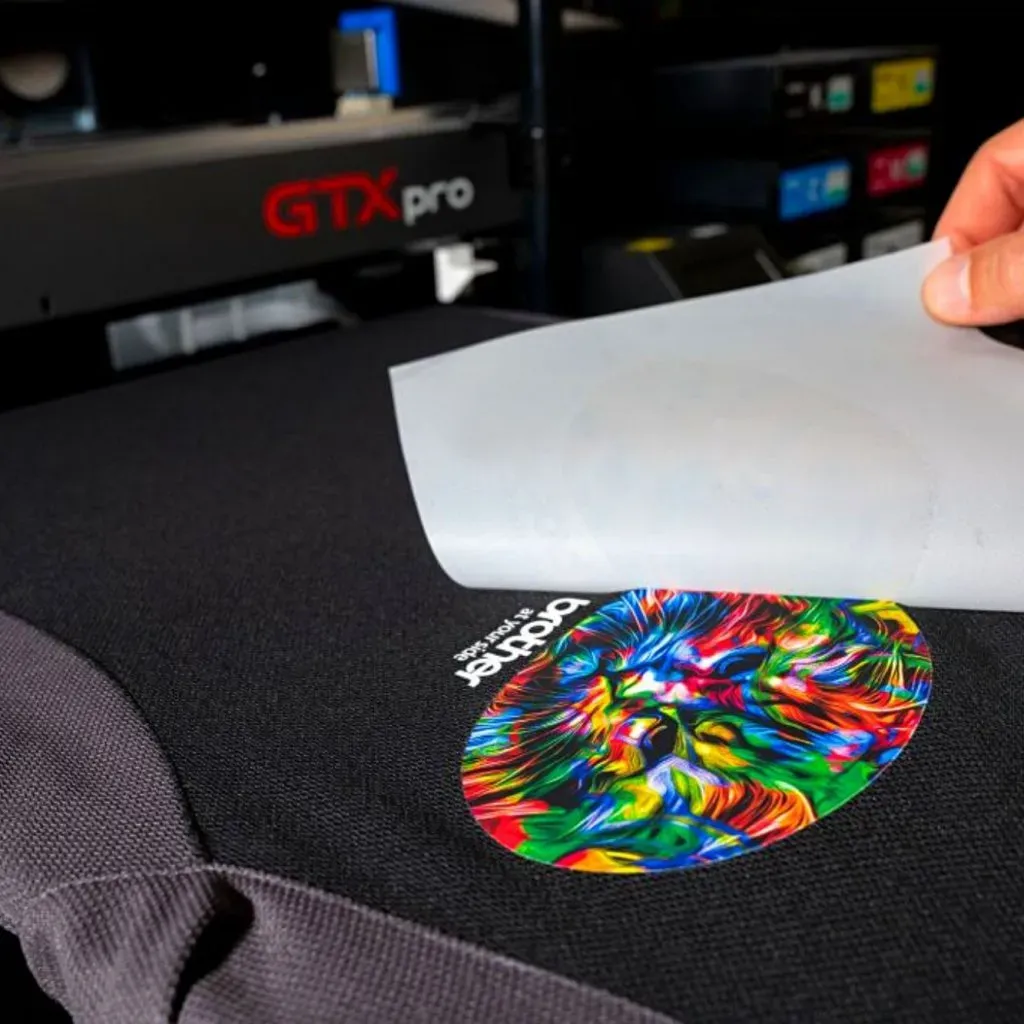DTF printing, or Direct to Film printing, is revolutionizing the custom apparel printing industry by offering a high-quality and efficient method of creating vibrant designs. This innovative technology allows designers and retailers to print intricate patterns directly onto a special film, which can be transferred onto various fabric types, making it an extremely versatile choice. As the demand for personalized fashion continues to soar, understanding the DTF printing advantages is essential for businesses looking to thrive in a competitive market. Eco-friendly printing solutions are also emerging within this technology, appealing to a growing base of environmentally conscious consumers. With substantial DTF printing market growth anticipated in the coming years, now is the perfect time to explore how this method can enhance your printing capabilities and meet customer needs.
Direct to Film (DTF) printing has become a buzzword in the textile industry, heralding a new era of custom printing techniques designed for maximum impact and efficiency. This method provides an innovative alternative to traditional printing approaches, allowing for detailed images to be transferred onto a variety of fabric surfaces seamlessly. As businesses increasingly adapt to the demand for unique and individualized products, the rise in DTF technology is evidenced by its growing presence in the marketplace. With advantages such as ease of use, cost-effectiveness, and the incorporation of eco-friendly practices, it is no wonder that many are turning to DTF as their preferred choice for custom apparel creation. With its impressive capabilities, DTF printing stands to reshape the future of textile production.
Understanding the DTF Printing Process
Direct to Film (DTF) printing is an innovative technology that allows for vibrant, high-quality prints directly on film, which are then transferred onto garments. This process involves printing designs onto a special film using specialized inks. Once printed, the film is coated with an adhesive powder, which is melted through a heat press onto the garment. This method expands the range of materials that can be printed on, allowing for designs on cotton, polyester, and even blends, making it ideal for custom apparel printing.
The DTF printing process is distinct from traditional methods like screen printing or vinyl transfer. One of the major advantages of DTF lies in its simplicity and efficiency, allowing businesses to create intricate designs with less setup time and fewer materials. This appeal contributes to the burgeoning market growth of DTF, especially among small businesses and startups in the custom apparel sector, as it offers an accessible entry point into high-quality textile printing.
DTF Printing Advantages That Transform Apparel Design
DTF printing boasts several advantages that significantly enhance the design possibilities for custom apparel. One notable benefit is the technology’s capability to produce detailed and colorful prints, surpassing many traditional printing methods. This not only makes it suitable for complex logos and images but also appeals to brands seeking to make a memorable impact through their merchandise. Furthermore, DTF’s versatility allows it to adhere to a variety of fabric types, offering designers an impressive range of substrate options.
Another major advantage is the cost-effectiveness of DTF printing. Unlike traditional printing methods that require large orders to make production viable, DTF enables short-run printing, which is ideal for businesses looking to minimize waste and lower upfront spending. This flexibility allows print shops to cater to a growing demand for personalized and on-demand apparel, capturing the attention of eco-conscious consumers who prefer sustainable practices in fashion and printing.
The Growing Market for DTF Printing
As businesses and consumers continue to seek personalized products, the DTF printing market has experienced rapid growth, becoming a key player in the custom apparel industry. Recent industry reports signal a robust upward trend in DTF technology adoption, driven by its ability to cater to the significantly growing online retail space. Many entrepreneurs are leveraging DTF’s advantages to meet evolving consumer demands, resulting in accelerated business growth and market expansion.
Strategists note that the growth prospects for DTF printing are linked to the increasing popularity of direct-to-consumer sales models. By adopting DTF technology, brands can efficiently manage on-demand production without the risks associated with excess inventory. This not only streamlines operations but also positions companies to adapt quickly to changing fashion trends and customer preferences, ensuring they remain competitive in an ever-evolving market landscape.
Eco-Friendly Innovations in DTF Printing Technology
In recent years, the demand for sustainable and eco-friendly printing solutions has surged dramatically. DTF printing technology has responded to this trend by developing eco-friendly inks and processes that minimize environmental impact. By utilizing water-based inks and reducing waste through efficient printing practices, DTF represents a significant step forward in making apparel printing more sustainable, which resonates with the values of today’s environmentally-conscious consumers.
Moreover, the use of DTF technology allows for less energy consumption and material waste compared to traditional techniques. As more consumers push for brands that prioritize sustainability, adopting eco-friendly DTF printing provides businesses not only with a competitive edge but also with an opportunity to participate in broader conversations about product responsibility in the fashion industry.
Technological Evolution Behind DTF Printing
The advancements in DTF printing technology have been remarkable, enabling higher quality and efficiency levels than ever before. With the introduction of new printing machines designed specifically for DTF, businesses can achieve superior transfer quality with less effort. These new machines often come equipped with advanced features like automatic design recognition and optimized ink distribution, ensuring that colors remain vibrant and true to design.
Additionally, technological evolution has led to the refinement of the DTF printing workflow, making it more user-friendly. Innovations such as easy-to-use design software and pre-treatment solutions for fabrics ensure that even novices can produce professional-quality results. As technology continues to improve, the barriers to entry for custom apparel printing lower, inviting more players into the market and driving healthy competition.
Community Support and Resources for DTF Printing Enthusiasts
As DTF printing gains momentum, a vibrant community of users has emerged, offering invaluable support for both novices and seasoned professionals. Online forums and social media groups serve as platforms for sharing experiences, troubleshooting challenges, and showcasing creative designs. This community-centric approach aids in demystifying the DTF printing process and invites more individuals to explore its possibilities.
Educational resources such as workshops, online courses, and tutorial videos are abundant, further empowering DTF enthusiasts. Whether you’re learning about maintenance techniques or mastering new design principles, these resources foster skill development and innovation. The collaborative spirit within the DTF printing community supports continuous learning and experimentation, which is vital for staying ahead in this rapidly evolving industry.
Frequently Asked Questions
What is DTF printing and how does it work?
DTF printing, or Direct to Film printing, is a digital printing technology that transfers ink from a film to fabric. This process involves printing designs onto a special film using high-quality ink, then applying a hot melt adhesive before transferring the design onto the fabric using a heat press. DTF printing is celebrated for its versatility and high-resolution results, making it an excellent choice for custom apparel printing.
What are the advantages of DTF printing over traditional methods?
DTF printing offers several advantages, including superior quality with vibrant colors and intricate details. Unlike traditional screen printing, DTF technology allows for designs to be printed on a wider variety of substrates, including cotton and polyester blends. Additionally, DTF printing is easier to set up and operate, making it accessible for small businesses and hobbyists looking for custom apparel printing solutions.
How is the DTF printing market growing?
The DTF printing market is experiencing significant growth, driven by increasing demand for custom apparel and personalized products. As e-commerce continues to expand, the need for efficient on-demand printing solutions has heightened, positioning DTF printing as a leading choice for businesses looking to adapt to market demands and enhance their offerings.
Are there eco-friendly options available in DTF printing?
Yes, the advancements in DTF printing technology have led to the introduction of eco-friendly inks and procedures. These options not only minimize environmental impact but also cater to the growing consumer demand for sustainable and eco-friendly printing solutions, ensuring that DTF printing can meet both market and ecological needs.
What industries can benefit from DTF printing technology?
DTF printing technology is versatile and can benefit a variety of industries, including fashion, sportswear, merchandise, and promotional products. Its ability to produce high-quality prints on diverse materials allows businesses in these industries to diversify their offerings and meet consumer preferences effectively.
How can new users learn about DTF printing techniques?
New users can access a range of educational resources to learn about DTF printing techniques. Online forums, video tutorials, and workshops provide valuable information on best practices for printing, maintenance, and design creation. Engaging with the DTF printing community is also essential for acquiring insights and tips from experienced users.
| Key Point | Details |
|---|---|
| Introduction to DTF Printing | DTF printing has transformed textile printing with its versatility and quality, catering to the needs of retailers and entrepreneurs. |
| Market Growth | Increasing demand for custom apparel and personalized printing solutions is driving the DTF printing market upward. |
| Advantages | DTF printing provides high-resolution prints on diverse substrates with ease of use, making it suitable for businesses and hobbyists alike. |
| Technological Innovations | Recent advancements include eco-friendly ink options and automatic printers that enhance efficiency and reduce costs. |
| Community Support | Growing resources and forums help users share best practices and insights, aiding in DTF technology adoption. |
| Competitive Landscape | Major industry players are investing in developing new DTF printers and accessories due to significant market potential. |
| Future Outlook | Experts predict robust growth in DTF printing across various industries, making it essential for businesses to integrate this technology. |
Summary
DTF Printing marks a revolutionary milestone in the landscape of textile printing, exemplifying how advanced technology can meet modern market demands effectively. This innovative method leverages the benefits of Direct to Film technology, allowing for vibrant, high-quality prints on a variety of fabric types. As the industry gravitates towards sustainability and efficiency, DTF Printing stands out with its remarkable adaptability, user-friendliness, and commitment to eco-friendly solutions. With a supportive community and ongoing technological advancements, DTF Printing is not just a fleeting trend; it is poised to redefine standards in custom apparel and other printed products, catering to the evolving needs of businesses and consumers alike.



